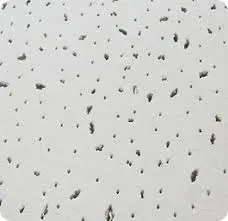- Afrikaans
- Albanian
- Amharic
- Arabic
- Armenian
- Azerbaijani
- Basque
- Belarusian
- Bengali
- Bosnian
- Bulgarian
- Catalan
- Cebuano
- Corsican
- Croatian
- Czech
- Danish
- Dutch
- English
- Esperanto
- Estonian
- French
- German
- Greek
- Hindi
- Indonesian
- irish
- Italian
- Japanese
- Korean
- Lao
- Malay
- Myanmar
- Norwegian
- Norwegian
- Polish
- Portuguese
- Romanian
- Russian
- Serbian
- Spanish
- Swedish
- Thai
- Turkish
- Ukrainian
- Uzbek
- Vietnamese
lis . 18, 2024 08:46 Back to list
t bar ceiling wire
Understanding T Bar Ceiling Wire A Comprehensive Overview
T bar ceiling wire, often referred to in construction and interior design as ceiling grid wire, plays a critical role in the installation and support of suspended ceilings. This type of ceiling system is popular in commercial spaces due to its versatility, ease of installation, and aesthetic appeal. Understanding the function, types, and installation of T bar ceiling wire is essential for contractors, architects, and DIY enthusiasts alike.
Function of T Bar Ceiling Wire
The primary function of T bar ceiling wire is to provide structural support for the grid system that holds ceiling panels in place. This wire ensures that the lightweight metal T bars, which form the framework for the ceiling, are securely anchored to the building's concrete slab or joists. This stability is crucial for maintaining the integrity of the ceiling, especially in environments that experience vibrations or other stresses.
Types of Ceiling Wire
T bar ceiling wires generally come in different forms, most notably as galvanized steel or stainless steel wires. Galvanized steel wires are commonly used due to their affordability and resistance to rust, making them suitable for various indoor environments. Stainless steel wires, while more expensive, offer superior corrosion resistance and strength, making them ideal for areas with high humidity or exposure to moisture.
t bar ceiling wire

Installation Process
The installation of T bar ceiling wire involves several key steps. First, the height at which the ceiling will be suspended must be determined based on the design requirements. Once the height is set, the main T bars are installed parallel to the length of the room, with cross T bars connected to form a grid. Ceiling wires are then attached at intervals to prevent sagging and ensure the grid is level.
It is essential to follow local building codes and manufacturer guidelines during installation to ensure safety and stability. Proper tension and spacing of the wires are crucial; overly tight or slack wires can result in an uneven ceiling or structural issues.
Conclusion
In conclusion, T bar ceiling wire is a fundamental component in the construction of suspended ceilings. It not only provides necessary support for the ceiling grid but also contributes to the overall aesthetic and functionality of interior spaces. Understanding its role, types, and installation process is vital for achieving a successful ceiling project, ensuring durability and visual appeal in various environments. Whether you are a professional contractor or a DIY enthusiast, mastering the nuances of T bar ceiling wire will enhance your ability to create beautiful and functional ceilings.
-
Transform Interiors with PVC Gypsum Ceiling: A Stylish, Durable, and Moisture-Resistant SolutionNewsMay.19,2025
-
The Smart Interior Upgrade: Discover the Durability and Versatility of Gypsum Ceiling Access Panel SolutionsNewsMay.19,2025
-
The Smart Choice for Interior Design: Discover the Value of PVC Gypsum Ceiling SolutionsNewsMay.19,2025
-
Mineral Fiber Ceiling Tiles: The Smart Blend of Performance and AestheticsNewsMay.19,2025
-
Mineral Fiber Ceiling Tiles: The Superior Choice Over Gypsum for Sound and Fire SafetyNewsMay.19,2025
-
Mineral Fiber Ceiling Tiles: Eco-Friendly Strength and Style for Every CeilingNewsMay.19,2025







